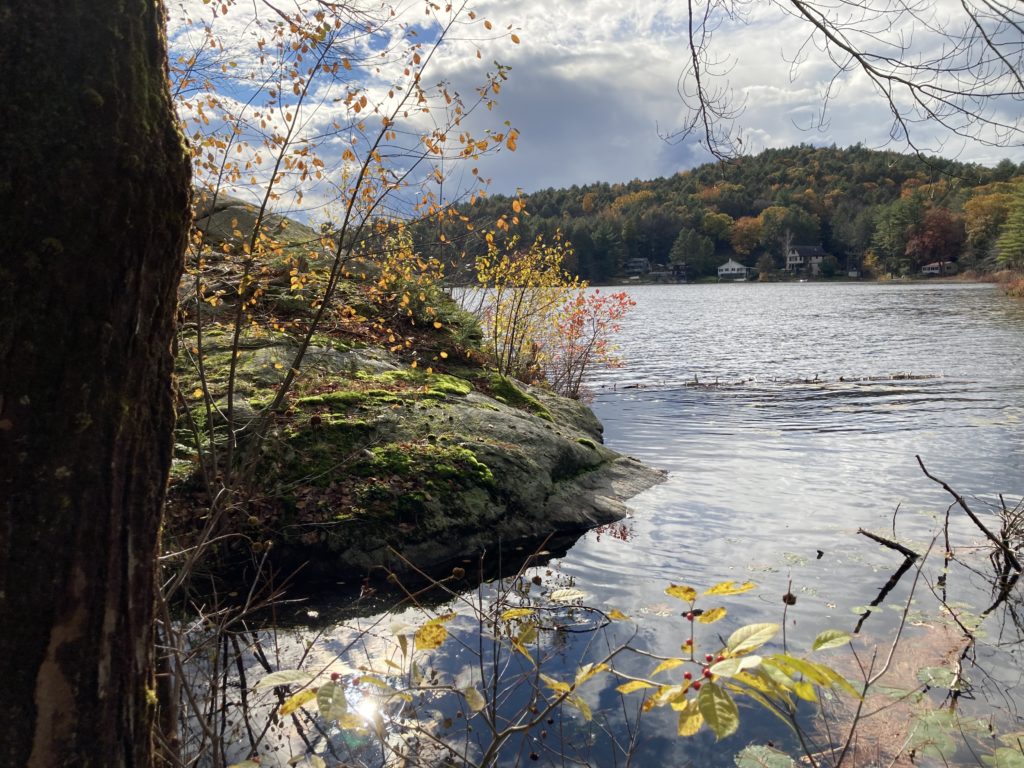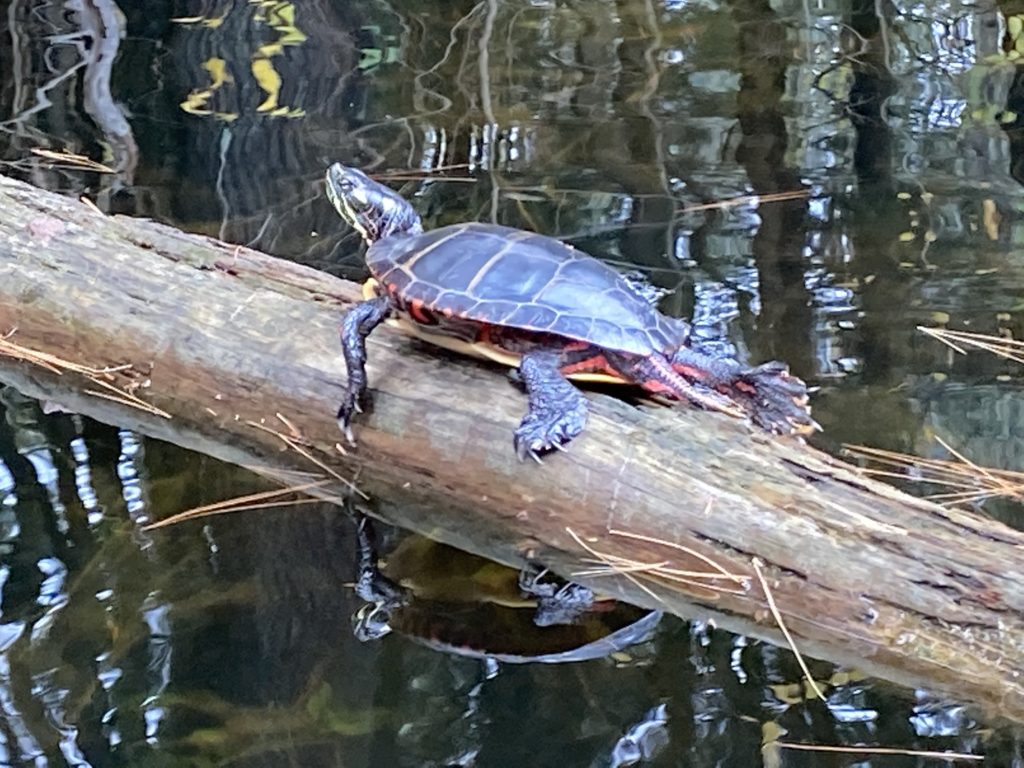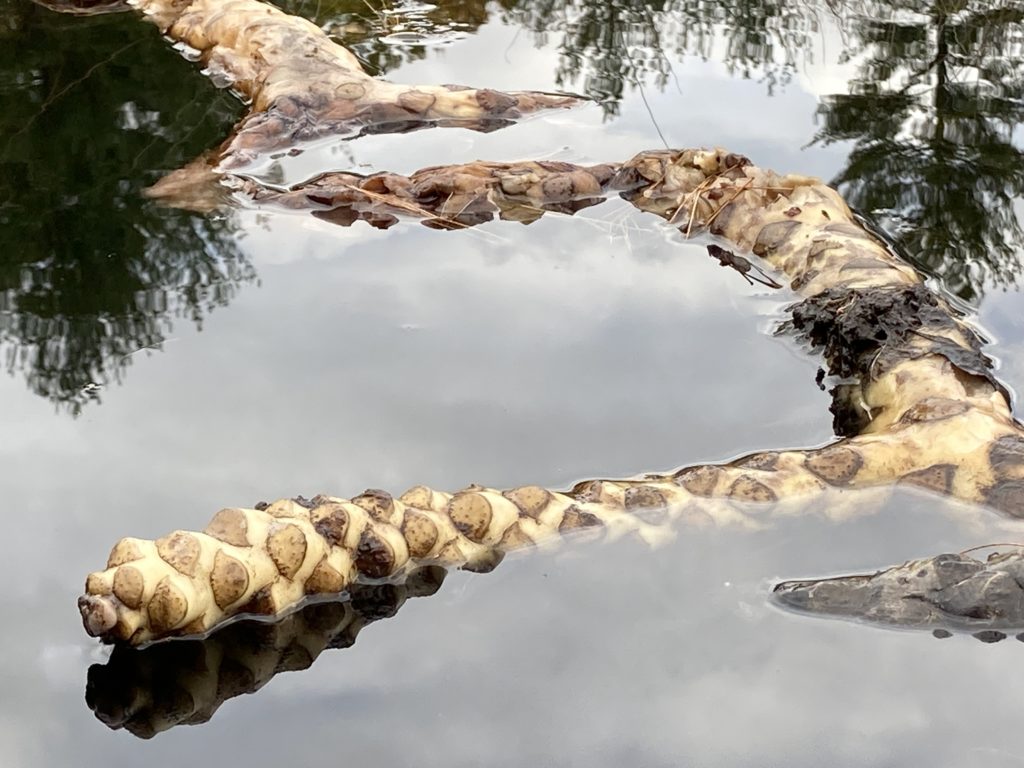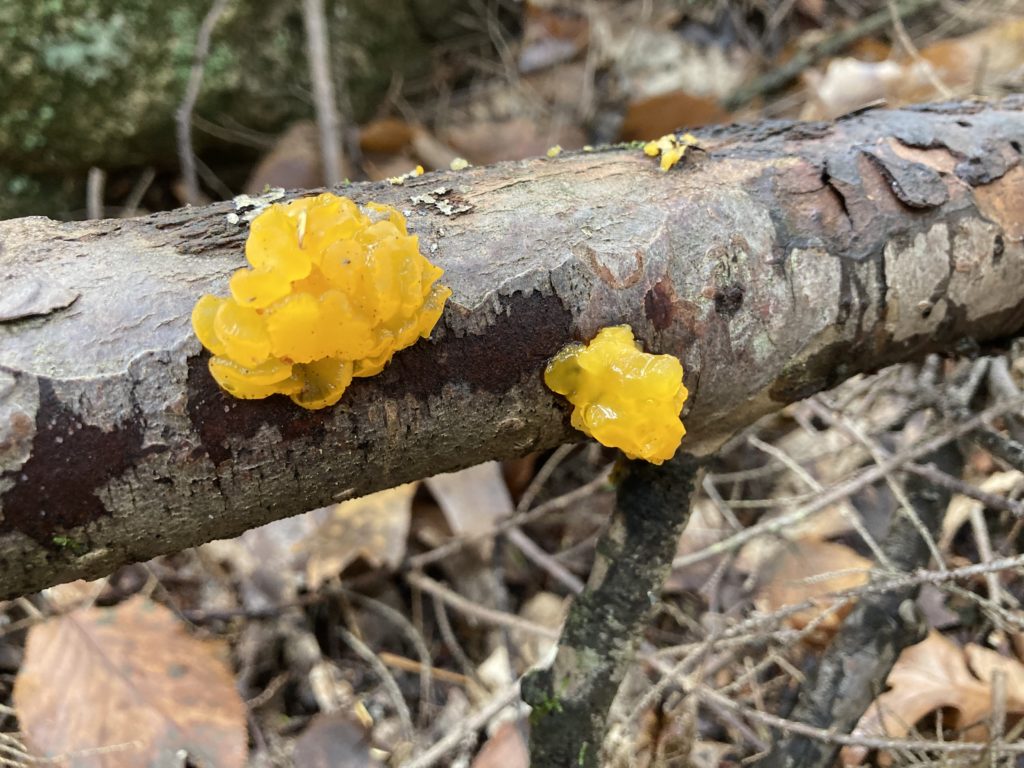Almanac: Surprises On An Autumn Paddle

Leverett Pond on a day poised between fall and winter. Photo: Stephen Braun
I had just paddled out from a narrow, cattail-bordered channel into the main body of Leverett Pond last Sunday when something big-ish broke the water’s surface with a splash behind me. Glancing back all I saw was a set of ripples expanding outward from the point of disturbance. Fish? Turtle? Beaver? Otter? Leverett Ness Monster? It was Halloween, so they all seemed possible.
I’d seen a small beaver lodge near the south shore, not far from the boat access point on Depot Road, so beaver was first on my list of possible suspects. But I was fairly far from the lodge and I saw no tell-tale head emerge after a couple of minutes waiting. It was one of those days perched delicately between fall and winter. When the sun emerged and the wind died down it was almost balmy, but then the clouds would thicken, the sky darken, and suddenly the air felt chilly enough that snow seemed possible.
I paddled along the eastern shore heading to the more wild northern parts of the pond. And then it happened again—a distinct splash outside of my direct gaze. Again I was left with nothing but ripples. As I rounded a large rock outcropping and entered a quiet narrow bay I was surprised to see some eastern painted turtles lounging on some logs.

I thought the cool air and infrequent sun would not appeal to these cold-blooded creatures. But there they were, trying to eke out some warmth from the post-equinox sun. I drifted toward one and it let me get quite close—maybe the chill had slowed its reflexes. I could easily see the deep orange dots along the edge of its beautifully smooth, dark upper shell and the orange and yellow stripes on its neck and the inner parts of its legs and tail. The turtle eyed me carefully, but didn’t budge.
Soon this fellow and its brethren will give up on the sun and burrow down about a meter into the muddy bottom and go into a state of profound suspended animation. Adaptations to the blood chemistry, brain, heart, and shells of these turtles allow them to survive easily on practically no oxygen and with extremely high levels of lactic acid, which builds up from anaerobic metabolism. Come spring they will emerge, Lazarus-like, none the worse for wear, ready for another year of their often decades-long lives.
The still-active turtles meant that my mystery splashes could plausibly have been caused by them…but I doubted it. Turtles usually swim underwater and only poke their head above water when they need to breath without making noisy splashes.

I continued to paddle close to shore and came across many of the thick, creepy-looking rhizomes of water lilies.
I’m not sure why I find these things vaguely disturbing–maybe they remind me of octopus tentacles or something. I know they’re benign—even edible—but there’s just something about them that give me the willies.
Five minutes later I was nosing into one of the northern coves when I spotted something distinctly large and dark moving in the water near the reedy shore. It slid underwater so smoothly I guessed it was an otter, but as I neared, I saw a beaver lodge on my left. A head emerged from the water, then dipped again and this time I could see the distinctive flat tail. Definitely a beaver. It was swimming quickly underwater and was invisible but still leaving a wake behind it. I tried to follow, but it was too fast for me. I noticed a trail of small bubbles leading toward the lodge and realized I could give up my hopes for a better look. Beavers have keen senses of sight and hearing and I doubted that, even sitting quietly in my kayak, that it would be fooled into thinking I’d left.
So now I wondered if my mystery splashes had, after all, been a beaver.
I paddled over to the little dam, recently restored, that maintains the water level of the spring-fed pond. I got out to explore a little onshore and came across a fungus with a name perfectly suited for the day: witch’s butter.

Witch’s butter is a common type of jelly fungus, which is a big family of blobby, brain-like, slimy, and otherwise somewhat disgusting-looking organisms that actually have fascinating and complicated life histories. Witch’s butter fungi resemble another common jelly called, appropriately enough, orange jelly fungus. You can tell the difference by what they’re growing on: witch’s butter grows on dead hardwoods, and the orange jellies only grow on dead conifers. Both are harmless and, in fact, are said to be edible, although relatively rubbery and tasteless. I passed on harvesting them.
I returned to my boat and headed back along the western shore, oven crossing over areas thick with water lily pads. Leverett Pond is very shallow…the deepest spot is only 21 feet, and it averages only five feet—and that means nearly half the pond is covered with some kind of vegetation—water lilies, pickerel weed, and several types of invasive water plants such as milfoil. (Interestingly, this body of water has yet to be infested with water chestnuts, which are the bane of the folks working to keep Lake Warner clear.)
Then two large splashes happened, one behind me again, but the other in my line of sight. Aha! Finally! It wasn’t a beaver, nor turtle, nor (thankfully) pond monster. Definitely a fish and most likely a large-mouthed bass, for which the Pond is noted. These fish love weedy, warm, shallow areas like Leverett Pond and can survive the relatively low levels of dissolved oxygen that occur in such bodies of water in the summer when all the plants are sucking the oxygen out of the water for their own growth.
It was getting late and I still had a pumpkin to carve and preparations for trick-or-treaters to finish, so I pushed it a bit, the warmth of the effort feeling good against the cool air. It was probably my last paddle of the season, so I was thankful for the surprising diversity of life I’d encountered in this season when so many organisms are shutting down, drawing inward, and growing quiet in advance of the snows to come.
Almanac is a regular Indy column of observations, musings, and occasional harangues related to the woods, waters, mountains, and skies of the Pioneer Valley. Please feel free to comment on posts and add your own experiences or observations.

The only times I’ve been beaver-splashed are at dawn or dusk – they were very alarming and VERY LOUD!!!!!!!!!!!!!!!!!!!!!!!!!!!!!!!!!!!!!!!!!!!!!!!!!!!!!!!!!